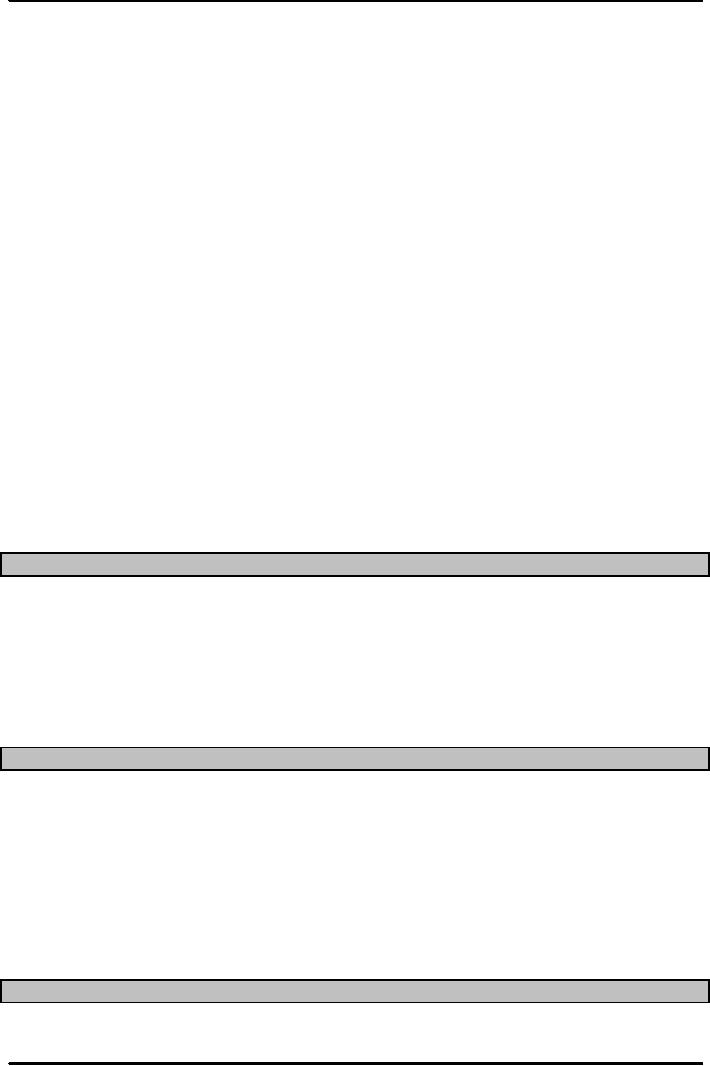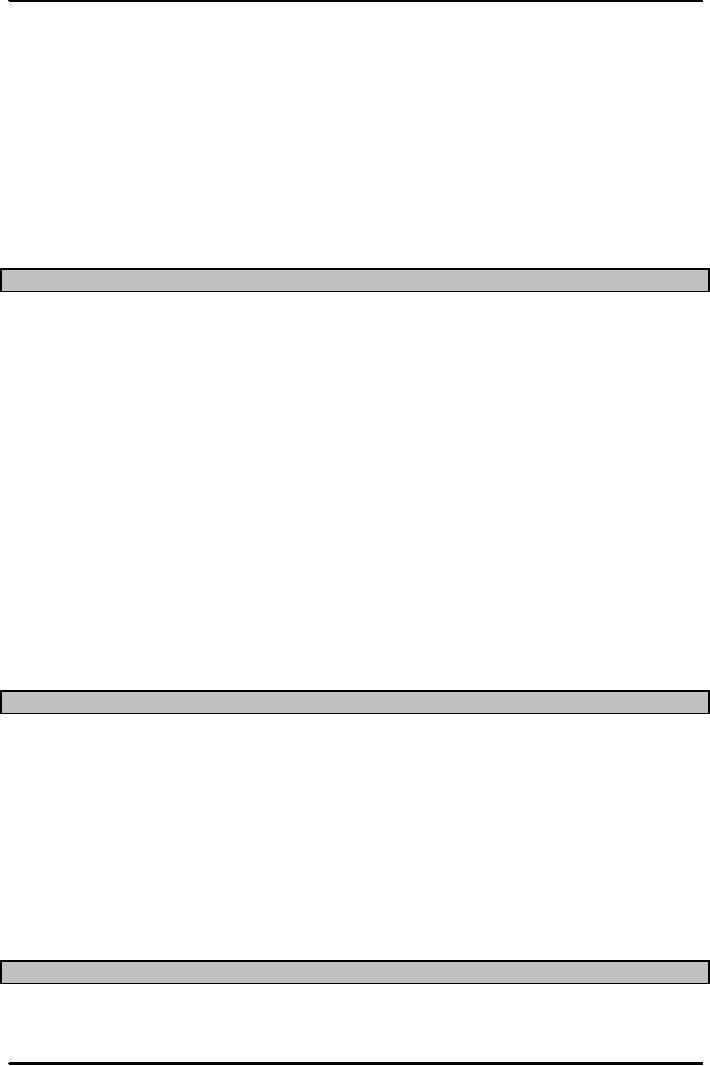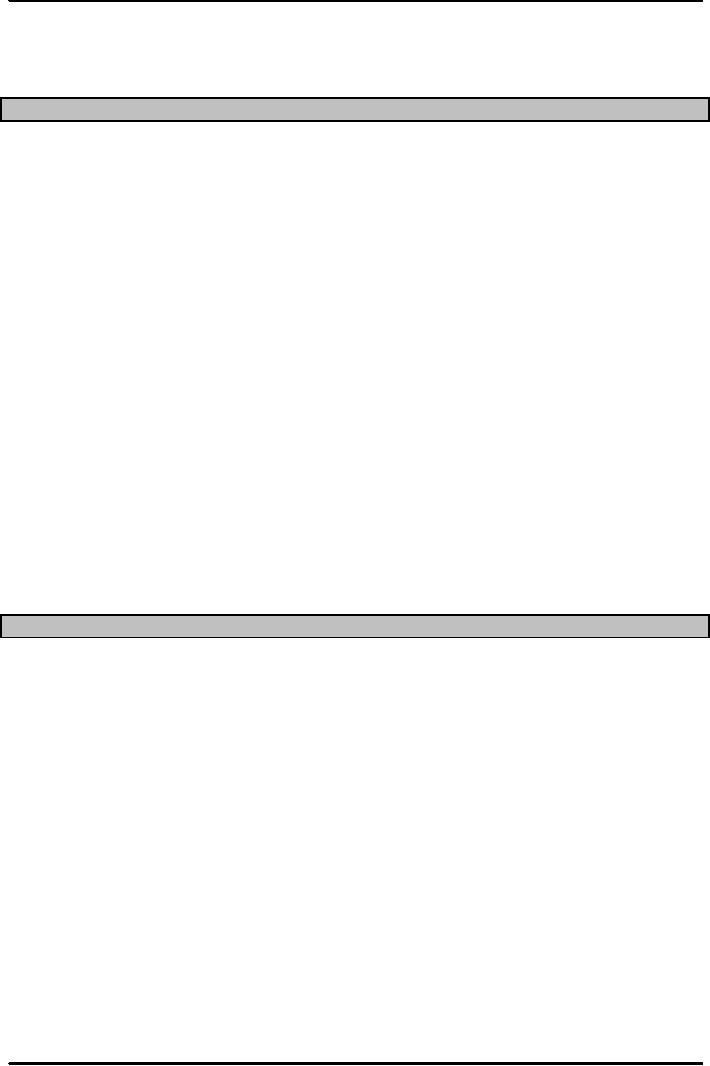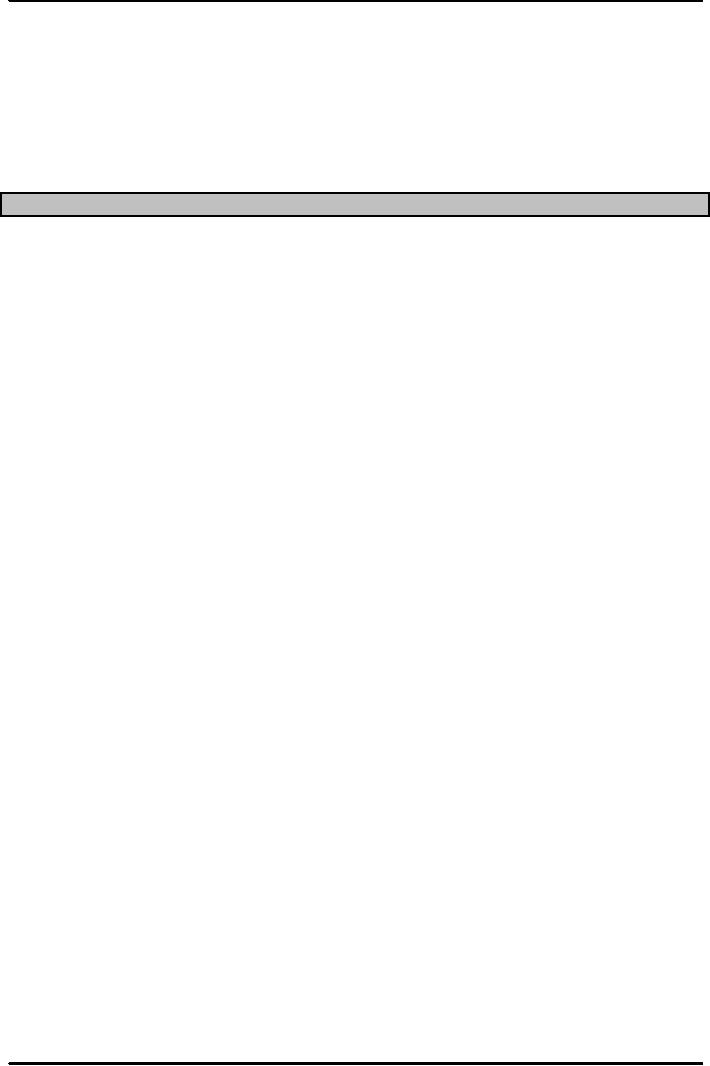 |

Production
and Operations Management
MGT613
VU
Lesson
11
Product and
Service Design together form the
very basis of design aspect of
operations. If SUPARCO
today
decides to send a person to
space, it would not only
develop and construct a rocket or
spaceship
but
would also provide services
in the training of the astronaut. The
fact is that we cannot leave
out
services
from products or exclude products from
service. They both complement and supplement
each
other.
We have to respect this concept and
pay attention in identifying
how products and services
are
present
in tandem everywhere. A cardiologist
carrying out angioplasty may
be providing services but
its
unheard
of today at least, that the
patient would be carrying
with him the spare valves
for the heart, so
those
valves also from the same
person who is providing
those services. If we go to the bank
for some
financial
services, we end up making use of a
cheque (product). Similarly if
Virtual University is
providing
students with an education service, it
also supplements the services
side by providing
products
like books, compact discs,
handouts, and power point slides. The
point we are trying to
focus
upon
is that products and services are
found in combination and a service
organization can also
provide
products
or a manufacturing organization can
also provide a service, like the
example we discussed in
class
about an automobile manufacturer
providing after sales
service.
From
this lecture onwards, we will be
embarking on the journey to learn
about Design of
Productive
Systems.
This journey would require
us to complete various milestones like
product and service design,
capacity
planning, Facilities Layout,
Design of Work systems and
Locations. Please pay
special
attention
to all those examples you have
already covered through your lectures.
And try to keep two
important
things in mind:-
1.
Design
aspect requires strategic planning and
may fall under the domain of
Organizational
strategy
and senior management, also
2.
Design
aspect requires the existing
system to be improved or replaced by a
better system
for
this you should always focus
on the word Productive. This
word reflects the idea of
adding
value either to the manufacturing or the
services System or to be more
precise
improving
the operation system.
Introduction
After
completing lectures on product and service design we
will be able to understand the importance
of
product
and service design. We will also try to
grasp the various important
aspects of the design process
in
detail. We will cover the
concept of standardization and advantages
and disadvantages. We should be
able
to appreciate the contribution of R&D to the
product service design. And last but
not the least; we
will
focus on the concept of Reliability in
order to learn in what possible ways we
can aid our
organization
to improve its product or service's
reliability.
Importance
of Product/Service Design
Product/Service
design plays a strategic role in helping
an organization achieve its goals. A
good
product/service
design can ensure customer
satisfaction, quality and production
costs. On the other
hand,
If an organization is offering poor
product or service, customer's feedback in the form of
lack of
interest
will result in poor sales.
Also Quality and production
costs are affected by poor
design of the
product
or service. The importance is also
often looked, as Pakistani
organizations have not yet
learnt to
pay
attention to safe operations of their
products or services. A poor product or
service can endanger
the
customers or consumers life.
For this it is necessary for
us as Operations Manager to question
the
safe
operations of the product or service, our
organization offers to its
customers and thus safe
guard our
organization
from product or service
liability.
Major
factors in design strategy
46

Production
and Operations Management
MGT613
VU
When
we discussed organizational and operation
strategy concepts we did set a
boundary line for
our
organizations
effective, smooth, reliable and safe
operations. When we will design a product
or service,
we
need to consider the following facts in
our design strategy.
1.
Cost
2.
Quality
3.
Time-to-market
4.
Customer
satisfaction
5.
Competitive
advantage
A
good product or service can be produced
or delivered at an economical cost with
increased quality,
with
a less time to market
provided the organization is willing to
aim for customer
satisfaction and this
most
of the time results in competitive
advantage as well increase in
revenues.
Product
or Service Design Activities
When
an organization decides to design its
new product or service or refine
its existing product
or
service,
it is suppose to follow certain
activities religiously and diligently.
The following activities
are
necessary:-
1.
Translate
customer wants and needs
into product and service
requirements
2.
Refine
existing products and services
3.
Develop
new products and services
4.
Formulate
quality goals
5.
Formulate
cost targets
6.
Construct
and test prototypes
7.
Document
specifications
An
organization can initiate a
product or service design if it is able to understand
what the customer
actually
wants in the product or service being
offered, say for example a
customer wants a fuel
efficient
car
and if the automobile manufacturing
organization is able to refine
its existing product, with
the
objective
of improving quality and reducing
costs, it can gain
competitive advantage and profits.
However
this requires the organization to not
only construct a prototype automobile
but also evaluate
its
performance
for robustness and then the design
side should document the specifications
in detail, along
with
test results and performance evaluations,
so only that product may be
introduced which is able
to
full
fill its intended use
throughout the country. A CNG
fitted car should function
effectively in Karachi
as
well as Lahore or Islamabad or hilly
areas of the northern part of the
country.
Reasons
for Product or Service Design
An
organization takes into
account both external and
internal reasons in order to design a
new product
or
service or redesign an existing product or service.
The reasons listed below
have often been the
primary
reason for the design
process.
1.
Economic
2.
Social and demographic
3.
Political, liability, or
legal
4.
Competitive
5.
Technological
What
is important is to realize that
whether it's a single reason
or multiple reasons for a design
strategy,
the
end result should always be an
improved, safe and reliable
product which should bring
revenue and
competitive
advantage to the organization.
Objectives
of Product and Service Design
The
primary focus for designing a
new product or service is Customer
satisfaction along with
the
secondary
focus being an improved function of
product/service, increase in
revenues/profits, Quality
along
with reduction in
costs.
47

Production
and Operations Management
MGT613
VU
The
current trend for designing
a new product is to pay special
attention to the product or
services
visual appearance, the ease of
production/assembly along with the
ease of maintenance/service.
However,
the design department of the organization should
take into account the
capabilities of the
organization
in designing goods and
services
Steps
in the Design Process
Most
of the organizations follow the design
process with the following
steps not necessarily in the
same
order
to achieve improvement in the performance of the
system and adding
value.
1.
Motivation: refers to the achievement of the goals
for the organization, for mature and
existing
organizations
the motivation also includes
government regulations (provides
new incentives, tax
free
zones), competitive process,
customer needs and appearance of
new technologies that
have
product
or service applications.
2.
Customers: The design process
would never be complete without the
valuable inputs of the
customers.
Any organization that fails to
satisfy and meet customer requirements
loose ground
to
their competitors.
3.
R&D: refers to the Research and
Development departments or divisions
which generate new
ideas
for the existing products or services or
simply new ideas for
new products or services.
Mostly
the activities are ITERATIVE and
employ the feedback of customer as well
as
operations
side.
4.
Competitors: The design process
often compels a company to dismantle and
inspect a
competitor's
product. Yes we call it
REVERSE ENGINEERING. This helps the
organization to
improve
its own product. Quite
often companies get the blame that
they improved
incrementally
their
competitors products design or certain features to
win the competition.
5.
Forecast Demand: refers to the demand for
the company's new product or
service.
6.
Manufacturability means the ease of
fabrication or assembly of a product as
it directly affects
cost,
quality and
productivity.
7.
General considerations: The design
process requires design, production/operations
and
marketing
departments to work closely
together. This would mean
sharing customer feedback,
quality
issues, and operations bottlenecks. In
addition legal or regulatory
issues and Product
Life
Cycle Issues must be
addressed as a part of design
function.
Legal,
Ethical, and Environmental
Issues
Organizations
whether manufacturing a product or
delivering a service are made to operate
in a three
dimensional
frame work of legal, ethical and
environmental boundaries.
1.
Legal.
Operations Managers should be able to
understand the legal environment in
which
their
organizations are functioning,
not only there are
governmental (federal, provincial
or
district)
regulations but also
industrial or service sector obligations.
These obligations are
guidelines
which need to be followed and if the
designers can adhere to them,
they only
make
life easy for themselves as
well as for the
organization.
FDA,
OSHA, CRS. There are
legal issues in which even the CEO
can be implicated if
there
are violations with respect
to pollution. FDA as the name indicates
refers to
Federal
Drug Agency, OSHA refers to
Occupational Safety Hygiene
Administration,
and
CBR denotes Center Board of Revenue,
which monitors the organizations
taxable
income.
Product
liability refers to a manufacturer being
liable in case of an injury or
damages
caused
by a faulty product.
Uniform
commercial code. Products
carry an implication of merchantability
and fitness,
which
is a product, must be usable
for the intended purpose. An organization
should
strictly
follow a uniform commercial code; imagine
if a manufacturer of electricity
cable
manufactures a non uniform
product that can lead to
electric shock to the end
user.
2.
Ethical.
Operations Manager should understand that
he is under
48

Production
and Operations Management
MGT613
VU
Contractual
agreement not to exhibit
unethical behavior. Releasing products
with defects
should
be informed to the customers. This is a
golden practice amongst Muslims
from the
days
of Holy Prophet (PBUH) and its
heartening to see the same
being employed here in
the
field
of International Business
3.
Environmental.
Operations Manager should also
work with in the same
Environmental
laws as his organization. EPA is
active in all countries including
Pakistan
and
even a CEO can be jailed if there is a
failure to comply with the
Environment laws. It is
the
responsibility of the design side to
ensure that no design would be
finalized that can
seriously
jeopardize the organizations standing
towards environment.
Designers
of Product/Service should adhere to
Guidelines
The
design side needs to adhere to
certain guidelines which can
ensure that the organization
is able to
achieve
its organizational strategy.
These guidelines are often
form the vary basis of an
organizations
design
strategy and indicates the importance of
standardization in the design of a product or
service.
1.
Produce designs that are
consistent with the goals of the company.
An economical upscale
model
automobile
design if replaced with a luxurious model
can invite a small number of
customers and
may
loose the existing stronger customer
base.
2.
Give customers the value
they expect .Reliability, safety,
endurance, aesthetic and
quality
dimensions
are what the customers are
looking for.
3.
Make health and safety a
primary concern .Green Rickshaws seen
functioning on the roads
these
days
are a result of taking care
of health and safety of the users as
well as those who operate
them.
4.
Consider potential harm to the environment .A
new product should be as a
primary guideline
should
be
better than the existing one and
should aid in the protection of
environment. A number of
automobile
manufacturers are using hybrid models or
cars where as its expected that
steam operated
cars
may be available in 5
years.
49
Table of Contents:
- INTRODUCTION TO PRODUCTION AND OPERATIONS MANAGEMENT
- INTRODUCTION TO PRODUCTION AND OPERATIONS MANAGEMENT:Decision Making
- INTRODUCTION TO PRODUCTION AND OPERATIONS MANAGEMENT:Strategy
- INTRODUCTION TO PRODUCTION AND OPERATIONS MANAGEMENT:Service Delivery System
- INTRODUCTION TO PRODUCTION AND OPERATIONS MANAGEMENT:Productivity
- INTRODUCTION TO PRODUCTION AND OPERATIONS MANAGEMENT:The Decision Process
- INTRODUCTION TO PRODUCTION AND OPERATIONS MANAGEMENT:Demand Management
- Roadmap to the Lecture:Fundamental Types of Forecasts, Finer Classification of Forecasts
- Time Series Forecasts:Techniques for Averaging, Simple Moving Average Solution
- The formula for the moving average is:Exponential Smoothing Model, Common Nonlinear Trends
- The formula for the moving average is:Major factors in design strategy
- The formula for the moving average is:Standardization, Mass Customization
- The formula for the moving average is:DESIGN STRATEGIES
- The formula for the moving average is:Measuring Reliability, AVAILABILITY
- The formula for the moving average is:Learning Objectives, Capacity Planning
- The formula for the moving average is:Efficiency and Utilization, Evaluating Alternatives
- The formula for the moving average is:Evaluating Alternatives, Financial Analysis
- PROCESS SELECTION:Types of Operation, Intermittent Processing
- PROCESS SELECTION:Basic Layout Types, Advantages of Product Layout
- PROCESS SELECTION:Cellular Layouts, Facilities Layouts, Importance of Layout Decisions
- DESIGN OF WORK SYSTEMS:Job Design, Specialization, Methods Analysis
- LOCATION PLANNING AND ANALYSIS:MANAGING GLOBAL OPERATIONS, Regional Factors
- MANAGEMENT OF QUALITY:Dimensions of Quality, Examples of Service Quality
- SERVICE QUALITY:Moments of Truth, Perceived Service Quality, Service Gap Analysis
- TOTAL QUALITY MANAGEMENT:Determinants of Quality, Responsibility for Quality
- TQM QUALITY:Six Sigma Team, PROCESS IMPROVEMENT
- QUALITY CONTROL & QUALITY ASSURANCE:INSPECTION, Control Chart
- ACCEPTANCE SAMPLING:CHOOSING A PLAN, CONSUMERíS AND PRODUCERíS RISK
- AGGREGATE PLANNING:Demand and Capacity Options
- AGGREGATE PLANNING:Aggregate Planning Relationships, Master Scheduling
- INVENTORY MANAGEMENT:Objective of Inventory Control, Inventory Counting Systems
- INVENTORY MANAGEMENT:ABC Classification System, Cycle Counting
- INVENTORY MANAGEMENT:Economic Production Quantity Assumptions
- INVENTORY MANAGEMENT:Independent and Dependent Demand
- INVENTORY MANAGEMENT:Capacity Planning, Manufacturing Resource Planning
- JUST IN TIME PRODUCTION SYSTEMS:Organizational and Operational Strategies
- JUST IN TIME PRODUCTION SYSTEMS:Operational Benefits, Kanban Formula
- JUST IN TIME PRODUCTION SYSTEMS:Secondary Goals, Tiered Supplier Network
- SUPPLY CHAIN MANAGEMENT:Logistics, Distribution Requirements Planning
- SUPPLY CHAIN MANAGEMENT:Supply Chain Benefits and Drawbacks
- SCHEDULING:High-Volume Systems, Load Chart, Hungarian Method
- SEQUENCING:Assumptions to Priority Rules, Scheduling Service Operations
- PROJECT MANAGEMENT:Project Life Cycle, Work Breakdown Structure
- PROJECT MANAGEMENT:Computing Algorithm, Project Crashing, Risk Management
- Waiting Lines:Queuing Analysis, System Characteristics, Priority Model